Material Handling in Salt Lake City Utah - Bins |
Material Handling Cabinets in Salt Lake City Utah |
Material Handling Carts in Salt Lake City Utah |
Casters in Salt Lake City Utah |
CHAIRS & STOOLS in Salt Lake City Utah |
Cleaners Wipes Mops for
Material Handling in Salt Lake City Utah |

Click Picture to Get More Detail and Pricing |

Click Picture to Get More Detail and Pricing |
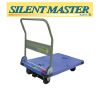
Click Picture to Get More Detail and Pricing |

Click Picture to Get More Detail and Pricing |
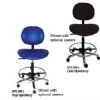
Click Picture to Get More Detail and Pricing |

Click Picture to Get More Detail and Pricing |
Containers in Salt Lake City Utah |
Conveyers in Salt Lake City Utah |
Cranes in Salt Lake City Utah |
Desks Tables in Salt Lake City Utah |
Dock Equipment in Salt Lake City Utah |
Dollies in Salt Lake City Utah |
|
|
 |
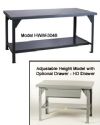 |
 |
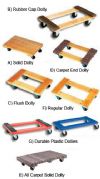 |
Drums and Equipment in Salt Lake City Utah |
Fans in Salt Lake City Utah |
Hoists and Equipment in Salt Lake City Utah |
Hoppers in Salt Lake City Utah |
Hose and Chord Reels in Salt Lake City Utah |
Ladders in Salt Lake City Utah |
|
|
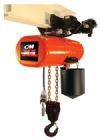 |
 |
 |
 |
Lifts and Lifting Equipment in Salt Lake City Utah |
Lockers in Salt Lake City Utah |
Matting in Salt Lake City Utah |
Pallets and Equipment in Salt Lake City Utah |
Particians and Barriers in Salt Lake City Utah |
Rack Systems in Salt Lake City Utah |
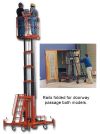 |
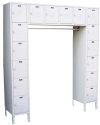 |
 |
 |
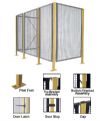 |
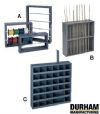 |
Safety Equipment in Salt Lake City Utah |
Scales in Salt Lake City Utah |
Security Equipment in Salt Lake City Utah |
Shelving in Salt Lake City Utah |
Shipping Supplies in Salt Lake City Utah |
Strapping in Salt Lake City Utah |
 |
 |
 |
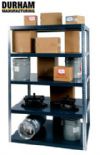 |
 |
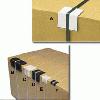 |
Trucks and Hand Trucks in Salt Lake City Utah |
Warehouse Equipment in Salt Lake City Utah |
Wire in Salt Lake City Utah |
Work Benches in Salt Lake City Utah |
Tool Control Systems in Salt Lake City Utah |
|
 |
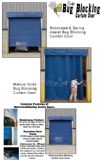 |
 |
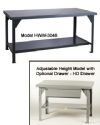 |
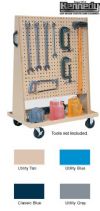 |
|
|
Material Handling Terms
A
ABC, ABC Classification - A strategy for classifying inventory or parts within a warehouse or system. Typically fastest movers are categorized as A items, though classification can be based on other factors as well such as margin.
Accessorial - A supplemental activity or material, outside normal handling and storage, that is billable in accordance with the clients contract.
Accessorial Charge - The amount charged to the client for providing accessorial service or materials.
Airbag - An inflatable bag used to fill empty space on a load of product to keep the product from shifting.
Allocated Inventory - Any inventory item that is reserved for specific customers or promotional events that is not to be used for standard order fulfillment reasons.
Allocation - Inventory is allocated to a specific order.
Anniversary Billing - Method of billing where the client is billed for one month of storage once inventory is received. If this product remains in inventory, it will be billed an additional monthly charge each month on the anniversary of its arrival.
Annual Inventory - The physical count of all products in the warehouse performed on a yearly basis.
Apron - The area outside the dock door which is used by delivery vehicles to park or position for loading and unloading. The Apron is specifically designed to a depth that will allow trailer floors to match with the warehouse floor in a way that facilitates loading and unloading.
ASN - An Advance Shipping Notice (ASN) is received from the client to inform of the contents of an inbound shipment prior to its arrival.
Assembly Area - Location in the warehouse where products and loads are collected and combined.
Available Inventory - The amount of shippable product in the warehouse; does not include product designated as damaged, on hold, or pending shipment.
B
Bar Code - A UPC code that identifies product. It consists of a series of black bars and is scannable. The bar code represents an identification number that is stored in the computer system along with other information about the product.
Back Haul - When an outbound shipment is delivered, instead of coming back empty, a load is picked up from a destination near the final stop-off and then returned either back to the warehouse or a Consignee location near the facility.
Banding - A type of plastic or metal strapping that helps support a load and hold it together. Can be used to strap and secure product on a pallet or skid.
Batch Picking - A picking method whereby one SKU is picked one time for all applicable orders and then distributed across multiple orders in a staging or packing location.
Bay - An area in the warehouse designated by markings on the columns or floor.
Bay Storage - Bay used for storage.
Beginning Inventory - Inventory level and count at the beginning of a period.
Bill of Lading - The Bill of Lading (BOL) is an official document that accompanies every shipment. It serves as the contract between the party that owns the freight and the carrier.
Bin - A four-sided structure that is mounted on a pallet. A bin may or may not have a cover.
Blind Counts - Blind counts are used during physical inventories to prevent counter bias. The location and item code are provided to the counter, but the counter must provide the quantity of the item found in the given location without knowledge of the desired quantity according to inventory records.
Bonded Warehouse - A bonded warehouse is one that has been approved by the U.S. Treasury Department who, due to observance of revenue laws, has put the warehouse under bond or guarantee.
Bottleneck - Traffic or congestion in an area of the warehouse due to poor planning or insufficient resources.
Bubble Wrap - Sheet of plastic with air bubbles that is used as a packing material.
Bulkhead - A movable railcar partition that is used to secure a load.
Bulk Storage - Storage of large quantities of product in shipping containers.
C
Carousel - Material Handling Equipment designed to bring product to picker so that the picker can remain stationed in a designated picking location without traveling. Ideally, order information is loaded or automatically transferred into the carousel system, and multiple orders are picked by multiple pickers at one time. Types of carousels include horizontal and vertical.
Carrier - The carrier transports goods from the client to Nexus and from Nexus to the consignee. The carrier can be Nexus (Nexus owned truck), a transportation company, or the railroad. Responsibilities include carrying the goods safely, in good condition and in a timely manner.
Carton - A unit of product, a protective casing around a product.
Chassis - A frame with wheels that supports a container that is being transported over land.
Chock - Using a wood or metal wedge to block the wheels of a truck while it is being loaded or unloaded.
Clamp - An attachment to a forklift that allows it to encircle and grasp product.
Clear Height - The height pallets can be stacked while leaving clearance for product movement or for lights, sprinklers, etc., hanging from a ceiling.
Client - The stock that arrives at our Distribution Centers is owned by the client, the companies that have made arrangements with Nexus to store and distribute their products.
Commodity - Product identified with specific clients.
Concealed Damage - Damage to product that is not obvious until the product is examined or the condition becomes apparent during storage or transfer.
Consignee - The client’s customers are referred to as the consignee. Just think of the consignee as the “end user” or the company where Nexus ships the stock.
Consignment inventory - Inventory that is in the possession of the customer, but is still owned by the supplier.
Consolidate - Combine two or more shipments going in the same direction or to the same destination on a single trailer.
Container - A container is a box that is used to transport product, and is widely used for international shipments. Marine containers or intermodal containers can travel on ocean liners, railroads, and on truck frames (chassis).
Contract - A binding agreement between Nexus and a client stating terms of the agreement, storage fees, transportation rates, and accessorial charges.
Contract Warehouse - A warehouse operation managed by a third party logistics provider for a specified period of time.
Cross Dock - Product or orders that are brought into the warehouse but not put-away. Instead of the stock arriving and being placed into storage, the stock is temporarily stored at the dock to be delivered or goes out immediately on another vehicle to be shipped. This stock is usually shipped immediately or within a day and does not go into storage.
Cross Training - Allowing employees to have experience in multiple tasks, job functions, or across multiple accounts in order to increase productivity and provide backup.
Cube Utilization - The space utilized versus space available.
Customer Pick Up - A load that is picked up on the same day purchased at the warehouse by the customer.
Cycle Counting - Physically count of your inventory on an on going basis. After a period of time all products have been counted. A cycle is then defined as the time it takes to count all inventory once.
D
Date Code - A label that shows when a product was manufactured.
Dead Stock - Product that has been in inventory for an extended period of time without being moved or ordered.
Deep-Lane Storage - Product is stored more than one unit deep in an aisle.
Dock - A warehouse door with an extending platform where trailers are loaded and unloaded.
Dock Face - Outer wall of dock door.
Dock Leveler - A plate at the dock door entrance that raised and lowered either manually or hydraulically to accommodate trailer floor heights.
Dock Light - A light used to illuminate the inside of a trailer in order to aid in the loading and unloading processes.
Dock Plate - A moveable metal plate that is placed between the warehouse dock door and a trailer or railcar and makes it easier/smoother to access a trailer or railcar with a forklift or similar equipment.
Double-Deep Storage Lane - Storing products two loads deep on a single warehouse aisle.
Drayage - A container or piggyback is moved from a rail yard to another location) and then returning that container back to the initial pick-up point, is known as a dray. It is important that these containers get unloaded quickly and returned back to the original point so not to incur detention charges.
Drive In Rack - Storage racking equipment that has side rails to enable warehouse operators to stack product high in deep rows. It provides access only from aisles.
Drive-Through Rack - Storage racking equipment with side rails to enable warehouse operators toe stack product high in deep rows. Unlike Drive-In Rack, Drive-Through Rack allows access from either end of the row, as opposed to only being accessible from the aisle.
Dunnage - Refers to packing materials such as cardboard, empty pallets, air bags, air pillows, packing peanuts, or other materials utilized to protect freight.
E
EDI (Electronic Data Interchange) - Electronic Data Interchange refers to a computerized exchange of information with the client through the warehouse management system. It is a method of exchanging orders, invoices, shipping forms and other documents over the computer.
Emergency Order - Also known as an expedited order, this order is placed and processed to be picked and shipped in an expedited manner.
Ending Inventory - Inventory levels at the end of a specified period.
Expiration Date - Date when merchandise is no longer able to be shipped.
F
Facility - The physical warehouse or plant where storage takes place.
FIFO (First In, First Out) - Inventory allocation method whereby the first product stored is the first product that is utilized or allocated for the fulfillment of orders.
FILO - First-in, last-out system of inventory.
Finished Goods Inventory - Products that are ready to ship.
Finished Product Inventory - Available products ready to ship to customers.
Floor Load - Refers to product stacked directly onto the floor of a trailer without pallets or slip sheets; product must be unloaded manually without the use of a forklift.
Flow Rack - Racking equipment that allows for the product to be stocked in through one side and removed for order fulfillment purposes from the other side. Product stored in Flow Rack is naturally allocated via FIFO based on the racking equipment design.
Forklift - A warehouse vehicle, also called a lift truck, which is used for lifting and transporting pallets of product. A forklift may have a special attachment on the front for specialized handling of product.
Forks - Lift-truck attachment used to move stock on pallets.
Freight Bill - An invoice for transportation charges generated when a load is delivered.
Freight Charge - Compensation paid to Nexus by the client for transportation services performed.
Freight Cost - This is the compensation paid to the contracted carrier by Nexus for the transportation services performed.
Fulfillment - The picking and processing of orders for shipping from a distribution or warehouse.
Full Truckload - This term refers to a shipment comprising a full or almost full load on a truck. A full or almost full load is considered to be 39,000 – 44,000 pounds.
G
Gaylord - Large corrugated carton that has the same length and width as a pallet.
Gravity Conveyor - Type of conveyor that uses gravity to move materials.
Gross Weight - The total weight without deduction for tare (includes packaging and container.
H
Handling - The labor involved in moving product received from the trailer into the warehouse dock and then into the storage location on the “IN” and moving the product out of the storage location and into a staging location to then be loaded onto a trailer on the “OUT”.
Handling Charge - Charge for normal warehouse handling (inbound or outbound, or both) to customer.
Handling Costs - Cost to warehouse or 3PL for all handling operations.
Hand Truck - Western hand truck is a device used to transport goods manually with wheels within the side rails. The Eastern hand-truck is similar except the wheels are outside the side rails.
Hazmat - Short for “hazardous material.” Material is deemed hazardous by the government or a carrier. Hazmat may require special handling or special facilities.
Hi-Lo - AKA Forklift. References the ability of the truck to lift and put down freight.
Honeycombing - The situation that occurs when a lot (see Lot) is partially depleted and the remaining space is wasted because it cannot be utilized.
Housekeeping - Keeping the warehouse presentable, organized, and safe for all parties.
I
In-House Damage - Damage to product that occurred while in the warehouse (i.e. water leak, dropped product, etc.).
Intermodal - Intermodal means using 2 or more, modes of transportation: rail, truck or ship. The stock can move over sea by ship, over land by rail and then, at the main rail switch, the container is removed and put on truck chassis. The stock is then carried by truck to our Distribution Centers.
Initial Storage - Warehouse storage charge for the month when product is received; it is typically billed when product is received.
Inner Packaging - Also known as “Dunnage,” includes materials such as foam, paper, or wood used to minimize movement within the container.
Inventory Turns - The number of times inventory turns is calculated using the following method:
a) Sum the Inventory In and the Inventory Out, and then divide by 2 to arrive at the Throughput.
b) The number of Inventory Turns is equal to the Throughput divided by the Average Inventory.
J
Just-in-Time - An inventory system that aims to coordinate the arrival of materials or supplies at a facility at the moment that they are needed in an effort to reduce storage and holding costs.
K
Kitting - Assembly of product or parts within the warehouse.
Glossary of Material Handling Logistical Terms L-Z
Glossary of Logistical Terms
L
Labels - Labels are pre-printed and pre-affixed labeling tags installed by the manufacturer.
Layout - Design and set-up of warehouse storage.
Less Than Container Load (LCL) - A shipment weighing less than the required weight to qualify for a full container rate. When the shipment is less than a full container load, the freight may be calculated as an LCL shipment.
Less Than Truckload (LTL) - Shipments weighing less than required for the application of a truckload rate. A typical full truckload shipment is 39,000 – 44,000 pounds. Weight breaks may vary across LTL classifications and in some instances it is less expensive to apply a full truckload rate even thought the shipment size may be less than 39,000 – 44,000 pounds.
Leveler - A dock plate that adjusts to the height of a trailer.
License Plate Number - Otherwise known as an “LPN,” this is a number used to identify products and containers.
LIFO (Last In, First Out) - Inventory allocation method that selects newest inventory first.
Lift Truck - A vehicle that is utilized to move and transfer product/freight in a distribution center, warehouse, terminal, manufacturing site, or dock. A lift truck is commonly referred to as a fork lift.
Live Rack - Slanted rack that allows for easier picking. Items are put into the high end of the rack and then picked from the low end. This is desirable for FIFO picking procedures.
Load - The product that is picked and loaded onto a truck and transported to a consignee.
Location - Each product has a specific location in the warehouse.
Location Audit - Routine audit of location records to ensure that records are compatible with actual placement of product within the warehouse.
Locator System - Locator systems allow for more effective inventory-tracking. Product can be stored in a way that makes sense for the warehouse, such as high demand product in more accessible locations. Locator systems assist in better accuracy with inventory tracking and control as well because it is all computerized.
Logistics - The processes and services associated with planning and implementing flow of storage and shipments in a 3rd Party operation required meeting the customers’ needs in an efficient manner.
Loose - Product remainder in a specific location or layer.
Lot - A group of products with the same run date or manufacturing date.
Lot Number - Identification number assigned to specific product for tracking purposes that is usually tied to a date or a production run.
Lot Number Traceability - The ability to trace items through a lot number. This is helpful when a specific product is needed or information about a specific product is required.
LTL, Less-Than-Truckload - Transportation term that describes shipments that are less than a trailer load. LTL also is used to describe the carriers that handle these loads. LTL carriers generally use strategically placed hubs to sort and consolidate LTL shipments into full-truck-load shipments.
Lumper - A contracted worker who assists in the loading and unloading process.
M
Manifest - A document that lists all of the products being transported; used when loads are combined.
Master Carton - A large carton that is used to hold and protect smaller cartons or packages of product. Using a master carton reduces handling as one larger piece instead of multiple small pieces.
Master Pack - A carton containing a specific number of product or multiple case quantities.
Material Handling - The services and processes the warehouse must utilize to move store and otherwise handle materials.
Man Up - Lift trucks that raise the operator as well as the load. Two types of man-up lift trucks are turret trucks and order selectors.
Motorized Pallet Truck - There are two different types of motorized pallet trucks, the “Walkie” and the “Rider.” The “Walkie” is built so that the operator can walk alongside it. The “Rider” is built so that the operator can stand and ride on the truck.
N
Narrow Aisle (NA) - Specialized lift trucks designed to be used in narrow aisles of 8 to 10 feet.
Net Storage Area - Space in the warehouse (in square feet or meters) that is actually used for storage. This does not include aisles, docks, offices and staging areas.
Net Weight - Product weight before being packed with materials or packaging. The total weight of the product with deduction for tare and packaging costs.
O
Obsolete Stock - Stock that has no useable purpose that remains in the warehouse.
On-Hand Inventory - The amount of product in the warehouse. The product may be designated as shippable, damaged, on hold, or pending shipment (allocated to an order).
On Hold - Refers to product that is designated as unable to be shipped; may be product with damage, questionable quality, expired shelf life, etc.
Order - A directive, sent by the owner of the goods, to ship product out of the warehouse. An order specifies product, quantity, shipping date, and destination and may contain special instructions.
Order Cost - The cost of labor, time, and other activities needed in an instance that a product is ordered.
Order Cycle - Based on demand and frequency for orders of specific product, the order cycle is a replenishment cycle that determines how often a product needs to sent as an inbound to the warehouse in order to keep up with demand.
Order Selector - Also known as an order picker, an order selector is a specialized lift truck that allows a person to ride on it with the pallet in order to pick from various locations and levels.
O,S,&,D - Over, Short and Damage; it refers to the condition of a load of product which arrives in a defective condition, or whose quantity does not match the bill of lading (cases over or short).
OSHA - Occupational Safety & Health Administration, a branch of the US Department of Labor.
Overage - When more has shipped on a load than was intended or was indicated on the BOL.
Over the Road Carrier - A truck or trailer used in hauling freight by road to destinations outside a 70 mile radius.
P
Packing List - The packing list is created in the Distribution Center. The packing list identifies the quantity and weight of each product on the order and each individual item # (unit ID, serial number, etc.) if applicable. It is a comprehensive list identifying exactly what is being shipped on the order.
Pack Size - Describes how a product is packaged such as “20 cartons per pallet” or “6 units per carton”.
Pallet - A wooden or plastic base upon which layers of product are stacked for storage and transporting with a forklift or pallet jack.
Pallet ID - The bar code tag that is placed on a pallet for tracking purposes.
Pallet Inverter - A machine that aids in the transfer of products from one pallet to another. The pallet inverter flips over the pallets and product in order to put the product on the new pallet and take off the old.
Palletize - To put materials and product onto a pallet.
Pallet Jack - Material handling equipment consisting of pallet forks on small wheels that are used in the warehouse to move cases of product.
Pallet Tag - Refers to the bar code sticker placed on a pallet of product.
Paper Roll Clamp - Designed specifically for the handling of large paper rolls, the paper roll clamp is a lift truck attachment that clamps around the roll and also allows for a full 360 degree rotation.
Partial - Less than a full pallet of product.
Perpetual Inventory System - A continuous inventory tracking method where inventory taken out is recorded with each outbound order and new inventory is recorded with each inbound order.
Physical Inventory - A physical count of everything in a warehouse.
Pick/Pack - A warehouse operation that involves picking individual items from cases and putting them together a carton or pack for shipment.
Picker - The person in charge of picking specific stock for orders.
Picking - Picking is the movement of stock from a storage area to a staging area. The Fork Lift / Clamp Operator will “pick” the stock which is assigned to a particular order.
Pick Ticket - The Pick Ticket is a document used by the Forklift / Clamp Operator or picker in the Distribution Center who will be locating the stock for the order. The Pick Ticket contains information such as, product location, quantity, lot numbers, serial numbers or unit numbers.
Pick Time - The time it takes to pick and document specific stock for an order.
Pick Slot - Location in warehouse where dedicated stock is stored.
Pick To Clear - Warehouse picks from locations with the least amount of product on hand in order to clear the area.
Pick To Light - Used in high volume piece picking, technique where pickers are directed to product by lights.
Piggy Back - The process of transporting a trailer on a railroad flatbed; the trailer is then hauled to its final destination by truck.
Pig - A type of trailer that can be transported on a rail car and also pulled by truck.
Pinwheel - Pin wheeling is a process of arranging pallets on a truck or product on a pallet to make the best use of space when dealing with items of different sizes.
Plugging - Plugging is a method of switching direction, stopping, or slowing down without using a break on electric industrial vehicles.
P.O.D. - Proof of Delivery; a signed bill of lading.
Pool - A combination of less than truckload (LTL) freight built to form a full or almost full truckload. By “sharing” space in a vehicle, the client and Nexus can minimize cost.
Private Warehouse - Warehouse that is operated by the owner of what is being stored inside of it.
Product Code - A series of unique characters issued by the manufacturer to identify each of its products. This is usually the SKU.
Pro Number - A number assigned to a shipment by the carrier for tracking purposes.
Push Back Rack - A rack system that pushes stored product up an inclined ramp in order to provide for deep pallet storage.
Push Sorter - Device used with conveyer systems, a push sorter moves product on the conveyer using a stationary device with an arm that can push and sort.
Put To Light - Similar to pick to light. Lights are used to guide which container the picked item is to be put into.
Public Warehouse - A storage business that provides the use of space for storage to a variety of clientele. This space can be leased for varying amounts of time determined by the contract set by both parties.
Put Away - Movement of stock from the time it is unloaded to the time it is put in its final location.
Q
Quality Assurance, Quality Control - The inspection of product as it comes in or goes out of the warehouse in order to ensure quality.
Queue time - Amount of time before set-up or processing of a job.
R
Rack - Metal framework in the warehouse used to store products several levels high.
Radio frequency (RF) - A data system made up of devices that use RF to transmit information into a host system from different locations or from “on the job.”
Ramp - Inclined area that connects to the warehouse to facilitate easier movement in and out of the warehouse by trucks and other equipment.
Rate Sheet - A schedule of warehouse or transportation charges for a client.
RDC - Retail Distribution Center which replenishes to stores.
Reach Truck - The reach truck is a narrow-aisle (8”-10”) lift truck specially designed for racked pallet storage. It is also known as a stand-up reach, straddle reach, or double-deep reach. The reach truck is designed with outriggers in front and telescoping forks controlled by a hydraulic mechanism. This mechanism allows you to pick up the load and pull it back over the outriggers in order to reduce the overall truck and load length. It is helpful for turning down a narrow aisle. The reach truck has a mechanism that allows for extended reach in order to store pallets two-deep in a double deep rack.
Real Time - Information is updated and saved instantaneously.
Receiving Report - A record of the condition of all inbound stock as it is checked in on arrival.
Receiving Tally - A list of all the inbounds received in an effort to ensure accuracy.
Recurring Storage - An amount charged to a client for monthly storage; it is based on the amount of product stored in the warehouse on the first day of the month or specified by the contract.
Refrigerated Warehouse - Temperature controlled warehouse that serves well for storage of food and other perishable products.
Release - Authorization to ship.
Re-Order Point - Inventory reaches a specific point based on demand where it is set for replenishment.
Repack - Packaging material differently than how it arrived. Example: making a pallet of 60 cartons into 3 pallets of 20 cartons.
Replenishment - Refilling of a picking location.
Return Authorization - Permission given to a carrier or consignee to return product to Nexus.
Return Authorization Number - This is usually a number supplied by the client authorizing the return of product from a consignee to Nexus (i.e. RPC or RMA).
Reverse Logistics - The logistics needed to plan return of product or a load. This may include a return order, transportation, and put-away.
RF - Radio Frequency scanning and transmission of data.
RF Gun - A hand-held radio frequency terminal with a screen, a keypad, and a scanner that is used by warehouse personnel to scan pallet tags and location tags.
RFID, Radio Frequency Identification - An alternative to barcodes, an RFID is a device on an object used to transmit data to an RFID receiver.
Roller Conveyor - Conveyers that uses rollers to move product either by gravity or by automation.
S
Safety Stock - Used to ensure availability of stock in case of deviations in supply or demand. These are calculated by using past deviations. To determine the optimal safety stock level, a required service level multiplier is needed.
SCAC - Standard Carrier Alpha Code; a unique 2 to 4 letter code assigned to transportation companies for identification purposes. SCAC codes are required for EDI, and are printed on bills of lading and other transportation documents.
Scheduling - Logistics involves daily shipments of stock into and out of the Nexus Distribution Centers. There are a limited number of docks / doors where outbound vehicles can be loaded and inbound vehicles unloaded. There also may be limited people and equipment to handle these tasks.
Serial Number - Number assigned to a single item in order to identify and differentiate it from others.
Shipment - Freight that is transported from one location, such as a regional distribution center (RDC) or manufacturing site, to another, such as a consignee.
Ship To - Delivery address for the consignee.
Shrinkage - Reduction in inventory measurement (often referred to as a result of loss or theft).
Shuttle - A load transported from one customer-related facility to another; does not include product shipped to a consignee.
Skate Wheel Conveyor - Conveyer that moves product using wheels.
SKU (Stock Keeping Unit) -A number (product code) assigned to a single item or items by the manufacturer.
Slip Sheet - A sheet of cardboard on which product is stacked; used instead of a pallet.
Slip Sheet Attachment - An attachment to the front end of a forklift that is used to handle product on a slip sheet.
Slotting - Approach used to determine the best placement and locations for products in the warehouse depending on its dimensions and how often the item is picked.
Soft Allocation - Initial allocation of inventory to an order which will commit the inventory but, not specifically pull it from a certain inventory lot.
Split Shipment - A partial shipment where the remainder of the order is on backorder and the warehouse cannot fulfill the entire request.
Spot - To place a trailer in a designated location or warehouse door.
Spot Check - Inspecting a sampling of containers in a shipment to determine if the quality of the entire shipment.
Spotting Horse - A specialized tractor used only to move trailers around the warehouse facility and place them at doors where they can be loaded or unloaded.
Stack Height - The number of pallets rolls & skids that can be safely stacked on top of each other; the client supplies this information.
Stacking - Placing stock on top of other merchandise in order to more efficiently use space.
Staging - The process of getting product from its storage area and placing it near the loading area for later shipment; or in cross docking, the process of unloading product and organizing it for immediate shipment.
Staging Area - A designated area of the warehouse near the loading dock where product is placed or arranged for shipment.
Stencils - Stencils are markings placed on the product with the ID information required by the customer for the product that they are receiving. This can be in different forms dependent on the specifics for the customer. It can be a label or just a chalk inscription with the product ID.
Stretch Wrap - Clear plastic film that is wrapped around a pallet of product to secure it.
Stock Allocation - When the “computer looks for and allocates stock”, it checks to see if it is available. Available stock can be used to fill the orders. When an order is input, the system will automatically look for available stock and allocate the stock to the particular order.
Stock Rotation - Way of prolonging shelf-life by moving or replacing product in a warehouse.
Storage Charge - Charge to client for holding stock that has not moved.
Storage Rate - Charge to client for all storage costs, usually on a month-to-month basis.
Strap Loading - Product is loaded onto a pallet and then secured with strapping.
Strapping - Belt used for securing goods on a pallet. Strapping can be metal or plastic.
T
Tag - A way to recognize a shipment or particular item.
Tally - A count performed when shipments are received in order to track and record their condition.
Tare - The weight of the wrapping holding the goods. For rolls, the tare consists of fiber core and the wrap. For pallets, the tare consists of the pallet and the wrap. The tare is the difference between the net weight and gross weight.
Terminals - Break points for carriers to strategically reload freight for delivery to the final destination.
Third Party Warehouse - Warehouse operated by a 3PL Company that houses the products of their clients.
Throughput - Method of calculating average product movement.
Tie - Units per Layer
Trailer - An enclosed vehicle, towed by a truck, which is used for transporting product.
Tractor - The truck that pulls a trailer.
Transaction Set - A group of data elements that represent the information on a business document, like a shipment order, and which are transmitted through EDI.
TMS, Transportation Management System - System used by the transportation department which aids in such tasks as manifesting shipments, finding rate quotes, and managing carriers.
Traceability - Ability to track a shipment from the time it leaves the warehouse until the time it arrives at the consignee.
Trackable - Total quantity of weight, space, and pallets.
Transportation Tariff - A document published by a carrier that describes charges for transportation between 2 or more points, and contains other terms and conditions governing the transportation activity.
Truck Door - Area in the warehouse that is used to accommodate the loading and unloading of trailers.
Turret Truck - Type of man-up lift truck with a rotating fork that can turn 90 degrees in either direction.
U
Unitization - To take individual items and ship them as a single larger item.
Unit Load - Otherwise known as a unitized load, a unit load is any arrangement of materials that are moved by material handling equipment, such as a lift truck, as a single unit (example: palletized loads).
Unit of Measure (U/M) - The type of measurement unit used to track inventory such as pallets (individual units) in your system.
Unit of Measure Conversions - Necessary when working with multiple units of measures such as pallets and eaches. Require a conversion such as eaches per pallet in order to make the load uniform.
Uprights - Vertical numbers used in the storage rack for identification purposes.
V
Value Added - Value is added to the distribution process when there is a contribution made to the functionality, value, or usefulness of a product.
Value Added Services - Extra services that a distribution center will perform in order to meet the needs of their customers. Typically refer to special assembly, packaging, or picking services.
W
Warehouse Receipt - Receipt for product received into the warehouse.
Wave Picking - Method of picking for multiple item orders where all zones are picked simultaneously and the product is sorted later. This method of picking is often used when picking shipments for specific carriers so that the product for each carrier is in the same place and can be sorted after it is picked.
WMS, Warehouse Management System - WMS is software designed to function around three main components: put away, replenishment, and picking. By directing these three components, the system can logically manage the movement and storage of product in the warehouse.
X, Y, Z
Zone - Zones are locations in the warehouse where usage is determined by the characteristics of the product being stored such as special handling, or special inventory management requirements.
Zone Picking - Method of order picking where the warehouse is divided into pick zones. Items are picked from each zone and then transferred on a conveyer system from one zone to the next.
Material Handling Applications in Salt Lake City 801-328-8788
With decades of hands on design, installation, and manufacturing experience, no other shelving and racking company has the expertise to match that of NationWide Shelving. We have installed thousands of shelving systems all over the nation. We understand the storage challenges you face, and have designers ready to create innovative solutions.
Manufacturers of Material Handling Offered in Salt Lake City
|
